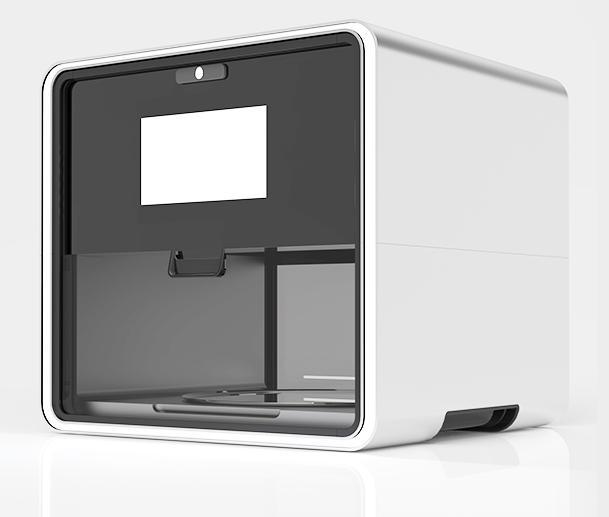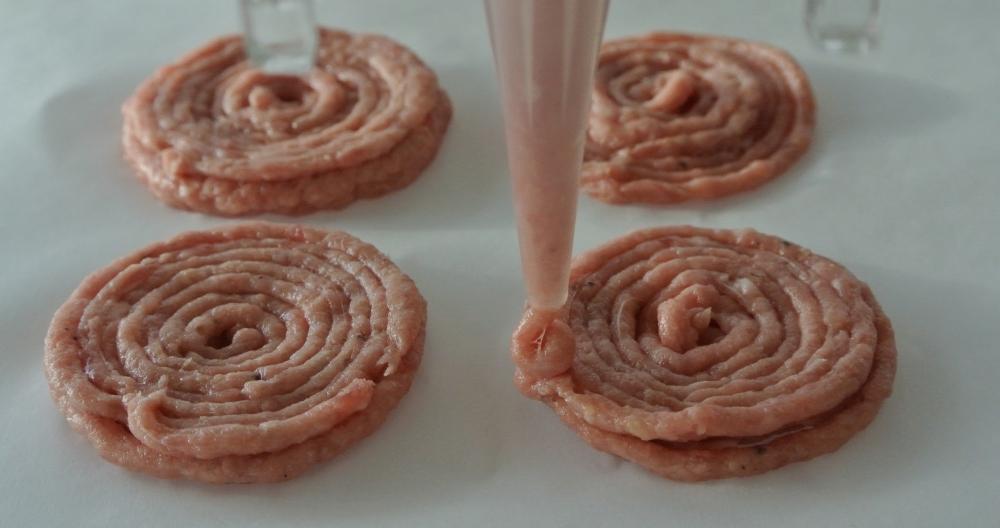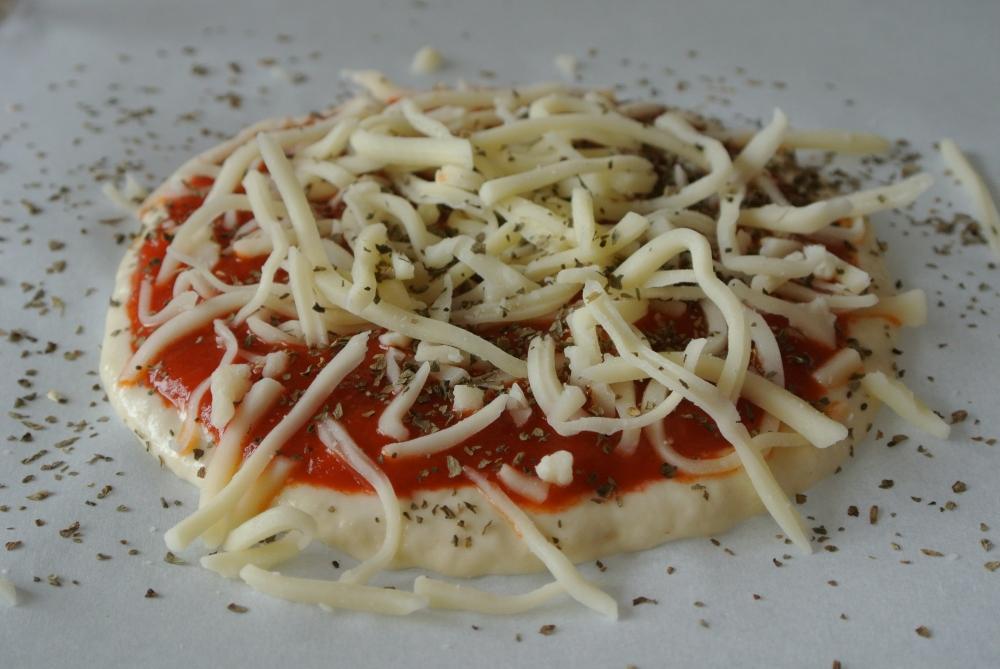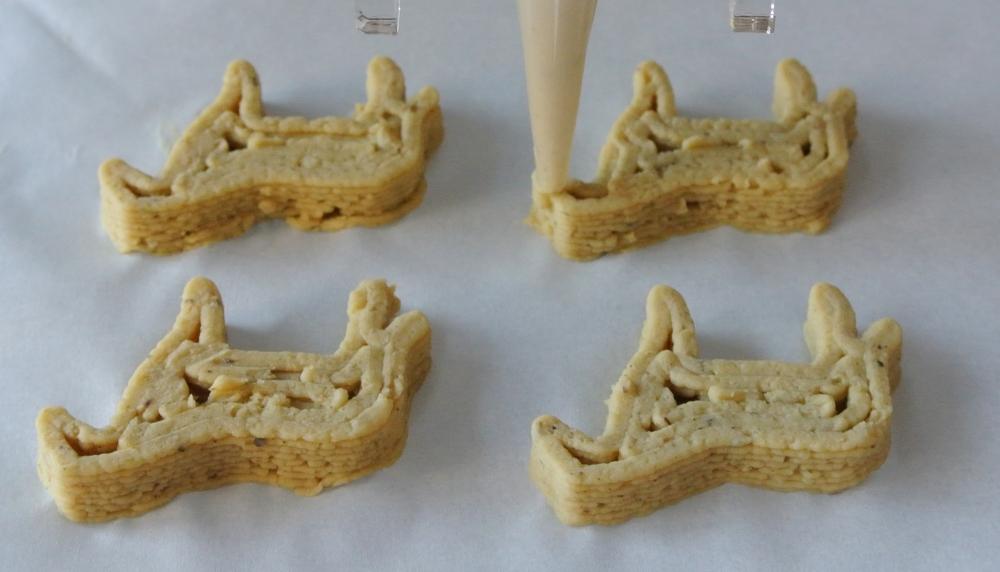3D printing is finally starting to evolve as a technology. Just several years ago, only the largest corporations had access to the benefits of 3D printers. Then came along the consumer level 3D printers which allowed just about anyone to own and operate one in their home. Now, within the past couple years, we have begun to see the emergence of 3D food printers – printers that can print out actual meals.
3D Systems has a line of printers called ChefJet which are able to print out small to large edible objects. These printers are mostly targeted toward professional pastry chefs, and bakeries, but being priced starting at under $5,000, surely several amateurs will be using these as well.
Another company, Natural Machines has created a 3D printer, called the Foodini, that is capable of printing out entire meals. You feed this machine with raw/uncooked foods and it prints objects in any design you would like. The Foodini has not yet been made fully available to the public, but that is coming soon. When they do, it should be interesting to see how they catch on.
Now, the United States Army, more specifically the Natick Soldier Research, Development and Engineering Center (NSRDEC), is looking seriously into the potential that lies within the 3D printing of food. Army researchers are looking into ways that they can incorporate 3D food printers into their food processing and product development techniques.
“The mission of Combat Feeding Directorate’s Food Processing, Engineering and Technology team is to advance novel food technologies,” explained Lauren Oleksyk, a food technologist who leads the research team for the Combat Feeding Directorate. “The technologies may or may not originate at NSRDEC, but we will advance them as needed to make them suitable for military field feeding needs. We will do what we can to make them suitable for both military and commercial applications.”
Representatives from the NSRDEC recently had an opportunity to meet with researchers at the Massachusetts Institute of Technology’s Lincoln Laboratory, to talk about how feasible 3D printing would be in creating rations for the Army’s soldiers.
“It could reduce costs because it could eventually be used to print food on demand,” said Mary Scerra, a NSRDEC food technologist. “For example, you would like a sandwich, where I would like ravioli. You would print what you want and eliminate wasted food.”
The army believes that 3D printing of food could be used on the battlefield, in order to create meals when needed, as well as in the preparation of processed food which is used for rations. Where it could seemingly have the most use, is in its ability to create completely custom meals. “We’re interested in maybe printing food that is tailored to a Soldier’s nutritional needs and then applying another novel process to render it shelf stable,” said Oleksyk.
Imagine a soldier who has been worn out from battle, and it is determined that he/she is in need of certain nutrients, to provide the energy level required for their survival. 3D printing would allow for the customization of specific needs. If there was a 3D printer on hand, that soldier could have a complete meal printed out, providing him/her with the exact nutrients that he/she needs at that given time. “If you are lacking in a nutrient, you could add that nutrient. If you were lacking protein, you could add meat to a pizza,” Oleksyk explained.
Everyone is different, and different situations can require different types of nutrients. In situations where a great deal of energy is required, perhaps the best meal would be one consisting of complex carbohydrates, as well as certain vitamins and minerals. A 3D printer could be fed with these nutrients and a meal could be printed out and provided to the soldiers in the field.
“Say you were on a difficult mission and you expended different nutrients…a printer could print according to what your needs were at that time,” Scerra said.
In the future, the Army researchers hope that they can provide compact 3D printers to their soldiers, who would then feed the machines with certain ingredients in order to create their own personalized “on demand” meals. This would allow soldiers to print out what they need, when the need it, and not rely so much on the traditional Army rations.
Regardless of if the Army adopts techniques of 3D printing food or not, the technology is certainly going to be a major part of our future. Restaurants, culinary institutions, bakeries, and perhaps even our military will all be using 3D food printers one day. There will surely be individuals who will be opposed to the technology, for fear of the unknown, but it is inevitable that 3D food printers will one day be prevalent everywhere we look.
What do you think? Should the Army use 3D printers to customize food and create “on demand” meals? Discuss in the 3D Printed Army Food forum thread on 3DPB.com.
[Source: armytechnology | Image Source: naturalmachines]
Subscribe to Our Email Newsletter
Stay up-to-date on all the latest news from the 3D printing industry and receive information and offers from third party vendors.
You May Also Like
Precision at the Microscale: UK Researchers Advance Medical Devices with BMF’s 3D Printing Tech
University of Nottingham researchers are using Boston Micro Fabrication‘s (BMF) 3D printing technology to develop medical devices that improve compatibility with human tissue. Funded by a UK grant, this project...
3D Printing Webinar and Event Roundup: April 21, 2024
It’s another busy week of webinars and events, starting with Hannover Messe in Germany and continuing with Metalcasting Congress, Chinaplas, TechBlick’s Innovation Festival, and more. Stratasys continues its advanced training...
3D Printing Webinar and Event Roundup: March 17, 2024
It’s another busy week of webinars and events, including SALMED 2024 and AM Forum in Berlin. Stratasys continues its in-person training and is offering two webinars, ASTM is holding a...
3D Printed Micro Antenna is 15% Smaller and 6X Lighter
Horizon Microtechnologies has achieved success in creating a high-frequency D-Band horn antenna through micro 3D printing. However, this achievement did not rely solely on 3D printing; it involved a combination...

































